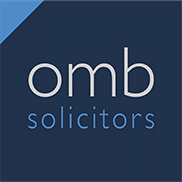In this video, OMB Solicitors Partner, Juliette Nairn discusses the tips and traps of the first annual general meeting of a body corporate.
Transcript
Thank you for taking the time to log on today and have a look at this video. This video that we are doing today is focusing on that particular first Annual General Meeting of a body corporate where the original owner is extracting themselves from the strata scheme and the new lot owners are coming through.
In our property market at the moment, we’re going through a property boom. We’re seeing a lot of new builds occurring within our body corporate industry. And as a consequence, I thought this was a great time to talk to body corporate managers and brand new committees about what happens at the first Annual General Meeting.
I actually call it the conflict of the first Annual General Meeting. And the reason why I call it a conflict is because on one side you have the developer who was the original owner. In the middle, you have your body corporate manager and then on the other side, you have the new committee who’s being introduced to the building. At the first Annual General Meeting, and prior to that, there might be an inaugural extraordinary general meeting, there are a number of matters that get ticked off.
Now, an original developer is aware of that. But we find when we attend buildings with the first twelve months of a body corporate committee, the committee actually doesn’t understand a few key points which need to occur, such as what is the date the strata plan was registered? That’s important because we want to know when time frames start to run from for the creation of this body corporate. Secondly, do we have an occupation certificate and what was the date of practical completion under the building contract? Thirdly, what documents were handed over by the original developer at that first Annual General Meeting? Did they hand over the building contract? Very important because we want to know that the building contract was handed over. Why? Because Section 36 of your Body Corporate Community Management Act says when the new body corporate is created and your original owner-developer starts moving out, the body corporate has the subrogated rights of your developer of the original owner. So pretend just like insurance.
The body corporate committee stands in the shoes of the developer and it has all the rights and responsibilities pursuant to that building contract. And that’s great from a body corporate perspective, it’s something in the Queensland legislation that’s very important for a body corporate because it gives the body corporate rights. It gives them rights to make sure that the work is done to a standard pursuant to the building contract. It identifies the retention money which may still exist within that first six to twelve months from the date of registration of the strata plan. If there is retention money, then the body corporate, it owns the common property and the assets. It needs to have a say on whether or not are there residential building defects that need to be repaired?
And should we investigate those while the original developer still holds some retention monies to be paid to the builder which may be need to be spent on the building. Okay.
A next document to look for is the construction drawings. The built. How is this building built?
Is everything included that we expect to be included? Exclusive use areas? Are the exclusive use plans done properly? And again, has every lot owner been allocated their exclusive use area?
These are all issues which are important to look at at the first Annual General Meeting and the last issue I think is also extremely important and often overlooked. At the first Annual General Meeting I would like to see our body corporate managers and our original owners and bodies corporate putting forward a motion which says here is the body corporate asset registry.
So for example, if you’re moving into a new building that has a gymnasium and all the gym equipment was supplied by the original developer and paid for by the original developer, that becomes a body corporate asset and then is included on the asset registry.
At the first Annual General Meeting has the developer gifted those body corporate assets to the body corporate or has the original developer put a line item in the sinking fund that says no you the body corporate needs to raise money and you need to pay for those body corporate assets. They’re not a gift. If that is something that is clarified at the first Annual General Meeting and in my view it’s something that should be gifted to the Body Corporate Lawyers Gold Coast then often that takes away an argument that can occur later down the track.
These are a number of the things which I would like our committees, particularly the new committees and our body corporate managers, to consider at the first Annual General Meeting of their body corporate. Again thank you for taking the time to listen.
As you know my name is Juliette Nairn. I’m a Partner with OMB Solicitors and at the moment with our property boom we’ve been attending a lot of first Annual General Meetings and these are some of the tips and tracts which have come up at these first Annual General Meetings.
To learn more about how our Body Corporate Lawyers Gold Coast team can help you, contact us today at OMB Solicitors.


